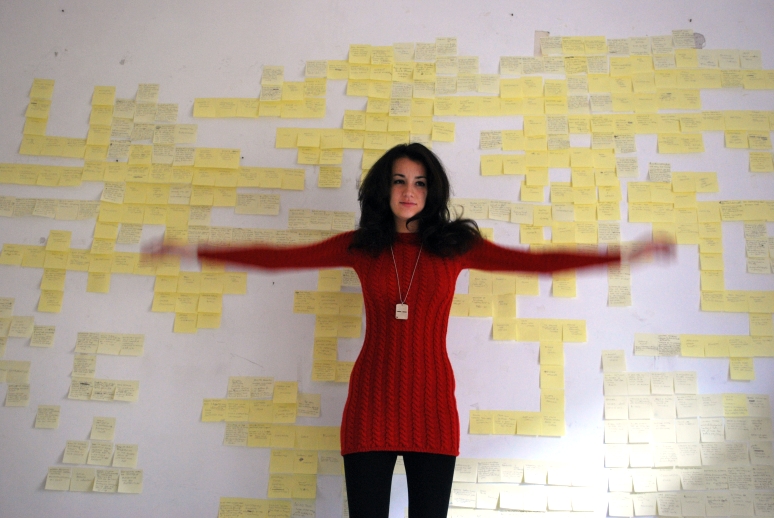The Italian web magazine Art a Part of Cult(ure) just published my interview to the Indonesian artist Aditya Chandra H. The interview is part of my reportage about Indonesian Contemporary Art.
Here you are the link to the interview
Read MoreThe Italian web magazine Art a Part of Cult(ure) just published my interview to the Indonesian artist Aditya Chandra H. The interview is part of my reportage about Indonesian Contemporary Art.
Here you are the link to the interview
Read More
What’s up with your book?
Well, I just overcome the worst step of them all: ranking all the post-its I’ve made.
In the beginning writing all the information about Indonesian contemporary art on the post it notes sounded good.
I was reading essays, catalogues, articles and stuff about the topic and I would be able to write down the information I’ve just learned and all the references directly on the post its.Then I stuck them on the wall and that was that.
Sweet. And practical too.
After a while it became a mess, sort of yellow geographic map on the white sea of my wall. To find a single information was hell.
Yeah, it was the Post-it Pandemonium.

Hot white tea and a slice of cake.
Inspired by this Simonedebeauvoirian-Sartrarian-Camussarian extra
romanticized attitude of writing in the cafes instead of quietly staying
home and working hard, my old fellow Lucas and I started hanging out in the
in the cafes on Via Giulia, Rome every so often.
I was reading a couple of books to widen my perspective on Indonesian
Contemporary Art. For an insight into the East/West dichotomy, the curator of Indonesia’s exhibition at MACRO, Dominique Lora, recommended Flavio Caroli’s “Arte d’Oriente Arte d’Occidente”.

Luogo di coordinate 0:0, probabilmente in un fumetto.
Legata ad una sedia, in mano a scagnozzi mettiamo, chessò, russo-mongoli appassionati d’arte, pronti a scazzottarmi, sono costretta a rivelare cos’è, o meglio cosa ho scoperto, di quest’arte contemporanea indonesiana.
“Ma come faccio a dirvelo maledizione santa! L’arte contemporanea non si presta a definizioni, è fluida, non deve essere ingabbiata, non può…”
Smack!
Il primo cazzotto arriva e quasi mi fa saltare i denti.
Riprova.
“Ci sono tanti artisti diversi, ognuno con la sua poetica, la sintesi, la sintesi cari signori, è depauperazione!”
Non capiscono la parola.
Gli sembra troppo scolastica.
Smack!
Te lo chiedo un’ultima volta…
“Con le buone immagino…” rispondo sputando saliva vermiglia
… cosa cercavi in Indonesia?

Tano D’Amico lancia al registratore appoggiato sul tavolino uno sguardo lungo, obliquo, minaccioso, di assoluta disapprovazione. E si che è stato lui a dire che la macchina fotografica è stupida, ragionevolmente non considererà un registratore tanto più intelligente: “Preferisco che tu scriva quello che ti rimane impresso.”
Siamo seduti ad un bar vicino l’Accademia di Belle Arti di Roma, in Via di Ripetta, e già qualche studente si è seduto al tavolo con noi, accolto con allegria da Tano.
C’è un’empatia naturale e reciproca tra i ragazzi e il “loro” fotoreporter, quello che gli ha fornito le immagini mitologiche delle rivolte studentesche, dagli anni ’70 fino ad oggi, oltre le banalizzazioni “pornografiche”, come le definisce lo stesso D’Amico, che i media erogano a getto continuo: “Sono immagini brutte, che non aiutano a vivere, bloccano la memoria, spesso non aiutano nemmeno ad esorcizzare il presente. Sono immagini fatti con gli occhi del boia, in una sorta di compiacimento della crudeltà, con l’alibi della documentazione. In queste immagini il carnefice ha un quoziente di umanità maggiore della vittima e sono indispensabili per chi comanda.